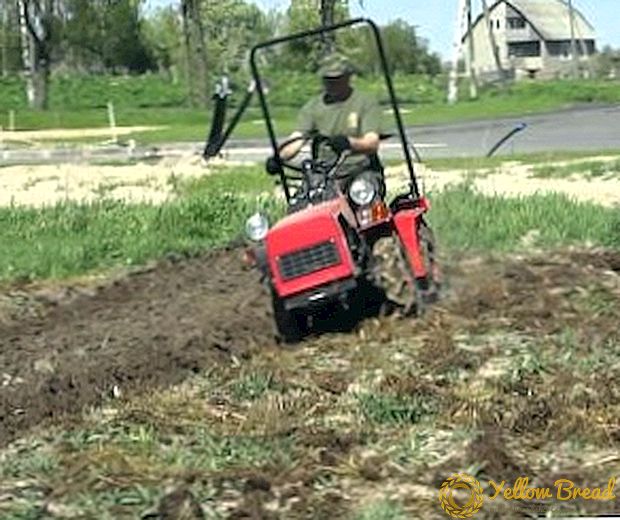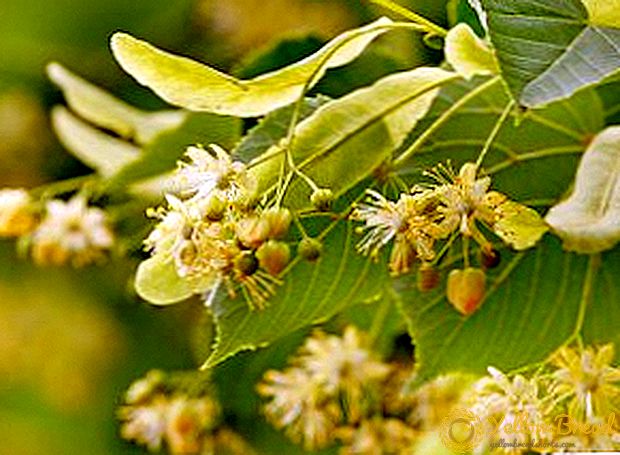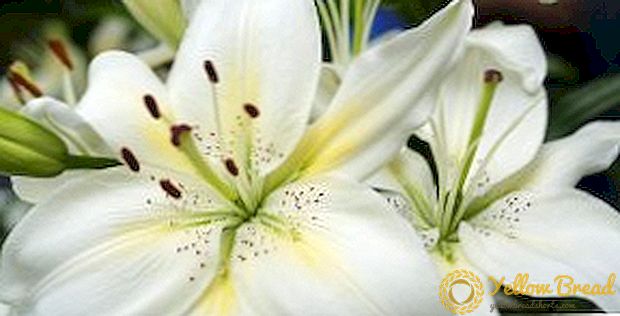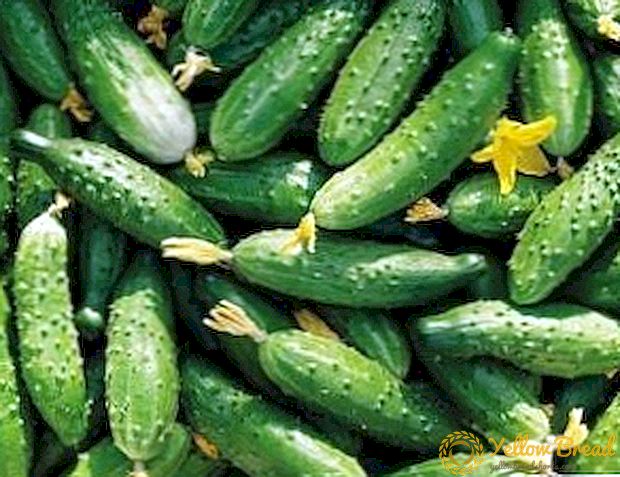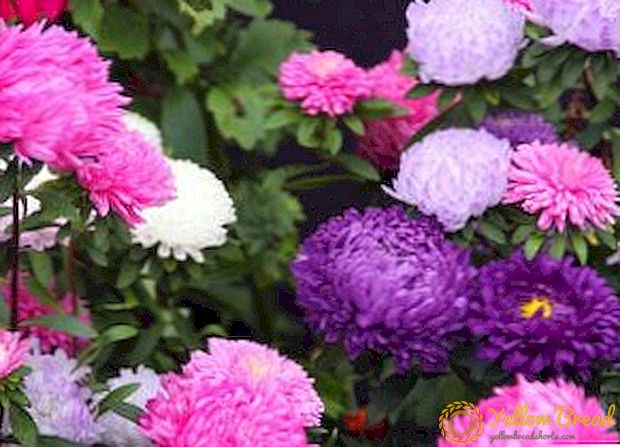 Carrots "Shantane 2461" has long been among the best cultivar types. Having the qualities of a leader, this variety has absorbed all the features of a recognizable product: a pleasant taste and aroma, beautiful appearance, high yield, versatility in use. In this article we consider the features of care, description of the variety, advantages and disadvantages of the French guest.
Carrots "Shantane 2461" has long been among the best cultivar types. Having the qualities of a leader, this variety has absorbed all the features of a recognizable product: a pleasant taste and aroma, beautiful appearance, high yield, versatility in use. In this article we consider the features of care, description of the variety, advantages and disadvantages of the French guest.
- Description of the variety
- The advantages and disadvantages of the variety
- Features agrotehnika
- Cultivation requirements
- Peculiarities of care
- Watering
- Top dressing
- Diseases and pests
Description of the variety
Variety "Shantane" was bred through the selection and synthesis of selected French species. This carrot became the ancestor of one of the most common varieties of modernity, whose representatives have many identical features. Equal smooth and even, bright orange root crops (13-14 cm) of a cone-like shape have a rounded head and a blunt tip. The overall sprawling rosette of a green shade possesses accurate strengthening. The flesh of carrots is very juicy and dense, while the core portion is rather inconspicuous. The sugar content is 10%, which makes carrots sweet enough.Per 100 g of fresh pulp accounts for up to 25 mg of carotene. This type is represented by a number of early and medium F1 hybrids, which makes it possible to grow carrots in a variety of climatic conditions.
The sugar content is 10%, which makes carrots sweet enough.Per 100 g of fresh pulp accounts for up to 25 mg of carotene. This type is represented by a number of early and medium F1 hybrids, which makes it possible to grow carrots in a variety of climatic conditions.
The period of ripening is from 90 to 130 days. Distinctive feature is high yield. Depending on the climate and the variety, "Shantane" ranges from 6-10 kg / m².
The advantages and disadvantages of the variety
Variety "Shantane" has a number of key characteristics that distinguish this carrot from a number of others. This type is one of the most versatile and elementary in use, as it does not require everyday hassle in care.Resistance to tsvetushnosti and various diseases provides "Shantane" climatic immunity, which allows you to grow a variety on different soils, in a variety of weather conditions.  Carrots were originally intended for long-term storage, as they are able to maintain a good appearance for up to 8 months. Nevertheless, it turned out that carrots are also perfect for fresh use, as they are sweet enough, fragrant and tasty.
Carrots were originally intended for long-term storage, as they are able to maintain a good appearance for up to 8 months. Nevertheless, it turned out that carrots are also perfect for fresh use, as they are sweet enough, fragrant and tasty.
Features agrotehnika
All table root vegetables, the Shantane variety type, are not an exception, they love broken and loose, nutritious, air-circulating soils, with a sufficient amount of sunlight. They are sown in the ground after cabbage, onions and tomato. "Shantane" also adapts well to heavy soils and high temperatures.
For a more fruitful harvest, you should use complex fertilizers for sowing: first, nitrogen fertilizers are used, and during the period of formation of the root crop, potash fertilizers. It is necessary to thin carrots 2 times so that the distance between the roots in the future is at least 6 cm. Depending on the type of representatives of the type varies and the ripening time of carrots.
Depending on the type of representatives of the type varies and the ripening time of carrots.
Cultivation requirements
To obtain a high-quality harvest of attractive, fragrant, sweet and nutritious carrots, it is necessary to carry out thorough tillage and properly care for this crop. Following uncommon advice, you can support the development of culture throughout the vegetative period:
- The soil must be dug when it is dry, which will help avoid breasts.
- The depth of digging should be 25-30 cm, which will allow the roots to be smooth and straight.
- Shantane should not be planted on freshly fertilized land to avoid rough, hairy root crops.
- It is better to sow the seeds in rows, with a distance of 5-7 mm, and the distance between the rows should be 35-40 cm.
- It is necessary to thin the seedlings and stably maintain the soil moisture.
- Thinned seedlings must be disposed of so that the carrot fly does not terrorize the fruit.
- Growing roots should be sprinkled with earth.

Peculiarities of care
As part of the care of the species "Shantana" should be divided into two main aspects: watering and fertilizing.
Watering
Watering young plants is made 1-2 times a week. It is necessary to spend up to 4 liters of water per 1 square meter. When small root crops are formed, the amount of watering should be reduced to 1 time per week, but the water consumption rate should double by 1 square meter.
Top dressing
Primary feeding should be carried out within a few weeks after the first thinning or germination. On a bucket of water, you need to take 1 teaspoon of potassium magnesia and urea, 1 tablespoon of superphosphate.  Secondary dressing it is necessary to produce a few weeks after the initial one: it is necessary to use complex mineral fertilizers - "Nitroammofosku" and "Nitrophoska", for 1 bucket of water - 2 tablespoons of fertilizer.
Secondary dressing it is necessary to produce a few weeks after the initial one: it is necessary to use complex mineral fertilizers - "Nitroammofosku" and "Nitrophoska", for 1 bucket of water - 2 tablespoons of fertilizer.
Third dressing It is produced by a solution of ordinary ash. After that, it is necessary to fertilize the soil with potassium sulfate, which lowers the amount of nitrates in the roots.
Diseases and pests
The main opponent of root vegetables is a carrot fly. The presence of this parasite can be determined by twisted leaves. But if the carrot was properly cared for, the fly would not be able to hit the root crop. Most often the pest lives on overgrown weeds, thickened and over-wetted soils.
In the event that a carrot fly still struck the fruit, it is necessary to use instant-acting chemicals: Actellic, Intavir, etc.
 As for diseases, carrots, in principle, are very weakly exposed to diseases. Sometimes trouble can occur due to fomoz or alternariosis. Nevertheless, a simple treatment of the bed with a one-percent solution of boroski will reduce the risk of such diseases by an order of magnitude.
As for diseases, carrots, in principle, are very weakly exposed to diseases. Sometimes trouble can occur due to fomoz or alternariosis. Nevertheless, a simple treatment of the bed with a one-percent solution of boroski will reduce the risk of such diseases by an order of magnitude.
